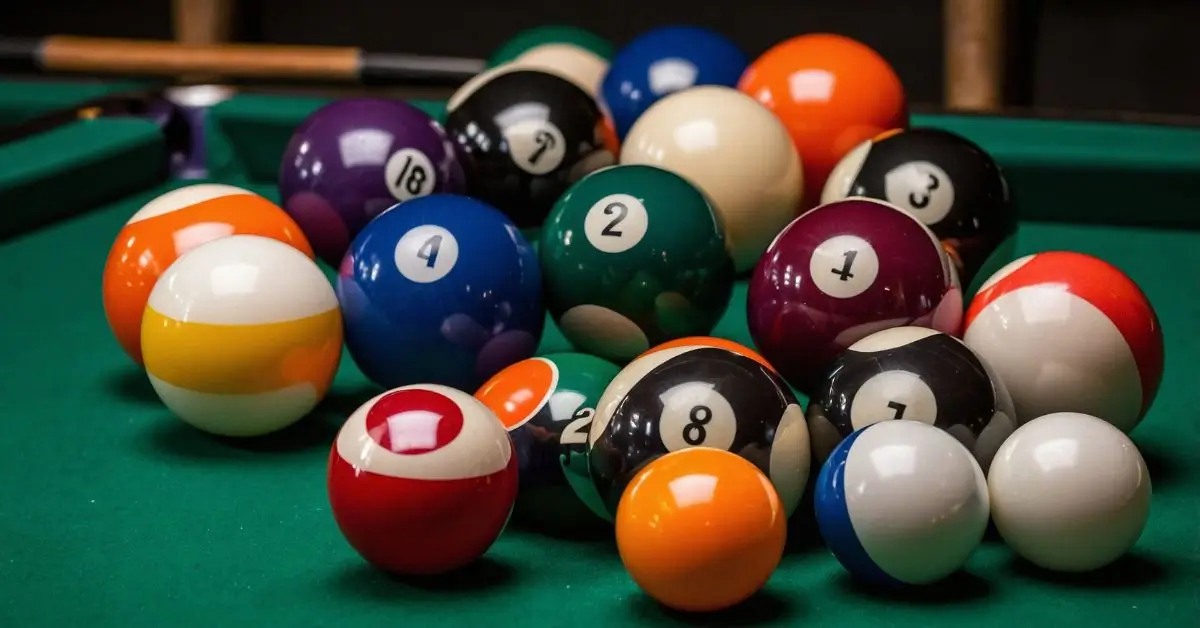Racking pool balls is an essential skill in the game of pool (billiards), ensuring that the game begins smoothly and fairly. Properly racking the balls affects how they disperse across the table after the break, influencing the game’s flow. Whether you’re playing 8-ball, 9-ball, straight pool, or another variation, understanding how to properly rack pool balls will enhance your experience and the competitive nature of the game. In this article, we’ll walk through the detailed steps of racking pool balls for different versions of the game, provide insights into common challenges, and discuss key tips and techniques to achieve a proper and legal rack.
What Does Racking Mean in Pool?
Before diving into the process of racking pool balls, it’s important to define the concept. In pool, “racking” refers to the arrangement of the balls into a specific formation before starting the game. The most common formation is the triangle, which consists of either 15 balls for games like 8-ball and straight pool or 9 balls for games like 9-ball. The rack ensures that the balls are tightly packed together before the break, which is the first shot that initiates the game.
Essential Pool Equipment
To rack pool balls properly, you need the following items:
- Pool Balls: These are typically numbered from 1 to 15 in games like 8-ball, or 1 to 9 in games like 9-ball. Each ball has a specific function or group association, depending on the game.
- Rack (Triangle or Diamond): A triangle-shaped rack is used for 15-ball games like 8-ball and straight pool, while a diamond-shaped rack is used for 9-ball. Racks help players set the balls in their correct positions and ensure that they’re tightly packed.
- Table with a Spot: Every pool table has a spot near the foot of the table (the end opposite the cue ball’s position) where the front ball, often the 1-ball, must be placed. This spot is usually marked with a dot or a marker.
Key Points to Consider Before Racking
- Tightness: Ensuring the balls are tightly packed in the rack is crucial. If the balls are loose, the break won’t be as effective, and some balls may stay stuck together.
- Correct Positioning: The front ball (also called the apex ball) must be placed over the foot spot on the table. Additionally, specific balls must be placed in designated positions depending on the game (e.g., the 8-ball in the center in 8-ball).
- Clean Balls and Rack: Dust or dirt on the balls or rack can affect how tightly they sit together, potentially causing issues during the break.
Racking for Different Pool Games
Now that you have a basic understanding of racking, let’s explore how to rack balls for some of the most popular pool games: 8-ball, 9-ball, and straight pool.
1. How to Rack for 8-Ball Pool
8-ball pool is one of the most widely played variations of pool. In this game, 15 balls are used, and the objective is to pocket either all the striped or solid balls, followed by the 8-ball. Here’s how you can properly rack the balls for 8-ball:
Steps for Racking 8-Ball:
- Position the Rack: Place the triangular rack on the foot spot of the pool table. The apex (front) of the triangle should align with the spot.
- Place the 1-Ball at the Apex: The 1-ball must be positioned at the top of the triangle, directly on the foot spot. This ensures a standardized break.
- Place the 8-Ball in the Center: The 8-ball should be placed in the exact middle of the triangle formation. This is a key rule in 8-ball racking.
- Alternate the Stripes and Solids: The remaining balls should be placed randomly, but players often alternate between solids and stripes around the outer edges of the rack. This ensures fairness in the break.
- Ensure Tightness: The balls must be tightly packed, with each ball in contact with its neighbors. Loose racks can cause the break to be uneven and less powerful.
- Remove the Rack: After ensuring all the balls are tightly positioned, lift the rack carefully to avoid disturbing the balls. The balls should stay in formation until the break.
Tips for a Better 8-Ball Rack:
- Avoid Guesswork: Make sure the 8-ball is placed exactly in the middle of the triangle, with alternating stripes and solids in the other positions.
- Use a Clean Rack: Dust and debris can affect how tight the balls sit together. Regularly cleaning your rack and balls ensures a tight rack every time.
2. How to Rack for 9-Ball Pool
9-ball is a fast-paced game that uses only the balls numbered 1 through 9, arranged in a diamond shape. Unlike 8-ball, the objective in 9-ball is to pocket the balls in numerical order, culminating with the 9-ball. Here’s how you can properly rack the balls for 9-ball:
Steps for Racking 9-Ball:
- Position the Diamond Rack: Place the diamond-shaped rack on the foot spot, with the apex of the diamond aligning with the spot.
- Place the 1-Ball at the Apex: Just like in 8-ball, the 1-ball is placed at the top of the diamond, directly over the foot spot.
- Place the 9-Ball in the Center: The 9-ball must be placed in the middle of the diamond. Pocketing the 9-ball is the ultimate objective of the game, so its positioning is crucial.
- Randomly Position the Other Balls: The other balls (2 through 8) should be placed randomly around the rack. There are no specific requirements for alternating solids and stripes in 9-ball.
- Tighten the Rack: As with 8-ball, the balls in a 9-ball game must be tightly packed to ensure a proper break.
- Remove the Rack: Once the balls are tightly packed and correctly positioned, carefully lift the diamond rack from the table.
Tips for a Better 9-Ball Rack:
- Focus on Tightness: Because there are fewer balls in 9-ball, it’s even more important to ensure a tight rack. Loose balls can greatly affect the break, diminishing the game’s competitiveness.
- Clean Balls: Keeping the balls clean allows them to stay close to one another, which leads to a tighter and more predictable rack.
3. How to Rack for Straight Pool
Straight pool, also known as 14.1 continuous, is a game where the goal is to reach a predetermined number of points. Players earn points by pocketing any ball on the table. Racking for straight pool is a bit different from 8-ball and 9-ball, as the game involves continuous racking. Here’s how you can rack the balls for straight pool:
Steps for Racking Straight Pool:
- Position the Triangle Rack: Place the triangular rack on the foot spot, aligning the apex with the spot on the table.
- Place the 1-Ball at the Apex: Like in 8-ball, the 1-ball is placed at the top of the rack, directly on the foot spot.
- Random Ball Placement: Unlike 8-ball, where you must alternate solids and stripes, and 9-ball, where balls are placed in numerical order, straight pool allows for random placement of balls. However, players often place the 2-ball and 3-ball in the back corners of the triangle for consistency.
- Tighten the Rack: As always, ensuring a tight rack is crucial for a proper break.
- Remove the Rack: After tightening the balls, carefully lift the rack and let the game begin.
Special Considerations for Straight Pool:
- Continuous Racking: Since straight pool is played to a certain number of points, racking occurs multiple times throughout the game. Each time, 14 balls are re-racked, while the 15th ball stays in place.
Common Mistakes When Racking Pool Balls
Even though racking might seem simple, several common mistakes can affect the break and overall gameplay. Avoiding these mistakes can significantly improve the fairness and quality of your games.
- Loose Racks: A loose rack is one of the most common problems. If the balls are not tightly packed, they won’t break properly, leading to clumped balls and uneven gameplay.
- Incorrect Ball Placement: Failing to place the correct balls (e.g., the 1-ball or 8-ball) in their designated positions can result in an illegal rack. This mistake often occurs due to inexperience or neglect.
- Misaligned Rack: If the apex of the rack isn’t directly over the foot spot, the break will be off-center, and the balls won’t disperse correctly.
Conclusion
Learning how to rack pool balls properly is an essential skill for anyone serious about playing pool, whether recreationally or competitively. Each pool game, whether it’s 8-ball, 9-ball, or straight pool, has specific rules and guidelines for racking. By following the step-by-step instructions outlined in this guide, you can ensure a tight, fair, and legal rack every time. Proper racking sets the tone for a smooth, enjoyable game and can even improve your performance by enabling more consistent and powerful breaks.











